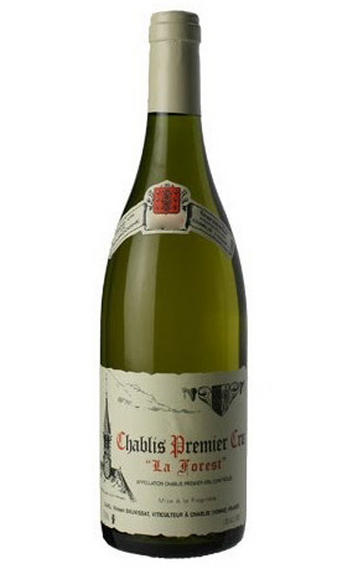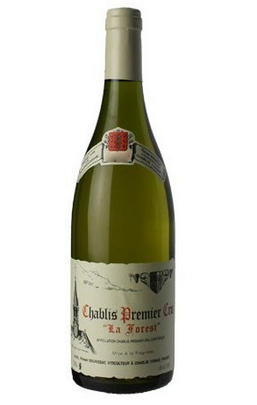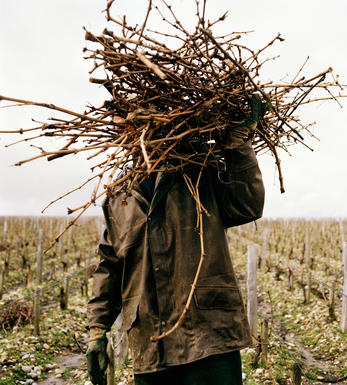
2018 Chablis, La Forest, 1er Cru, Vincent Dauvissat, Burgundy

Critics reviews
Drink 2030+
Burghound (Nov 2020)
Antonio Galloni, Vinous (Jan 2020)
Drink 2023-2035
Jeb Dunnuck, jebdunnuck.com (Mar 2020)
About this WINE

Vincent Dauvissat
Domaine René et Vincent Dauvissat is arguably the finest domaine in Chablis and its place at the top of the Chablis hierarchy is rivalled only by Domaine Raveneau. Robert Dauvissat established it in the 1920s, although its reputation was established by his son René who managed the domaine for many years. Vincent started working with his father in 1976 and has run the domaine for the last 5 years.
There are 11 hectares of vineyards split between two Grands Crus and three Premiers Crus sites. Yields are tightly restricted and in the winery the vinification and maturation is painstaking and meticulous. The grapes are fermented in enamel tanks and the juice remains in tank for a year before being transferred to oak barrels, a small percentage of which are new. The wines have a purity and intensity of flavour seldom encountered in Chablis today.

Chablis
Chablis lies further north than the rest of Burgundy, located about halfway between Beaune and Paris; it’s actually not all that far from Champagne. The wines here – exclusively whites from Chardonnay – differ in style from other white Burgundies: they tend towards steeliness and flintiness.
The Chablis region is an island of vines lying amid the forests and pastures of the Yonne département. In the heart of Chablis, the soils are marl (clay-limestone) of a particular kind – Kimmeridgian – containing traces of marine fossils. For many, the classic aroma and flavour profile of Chablis is built around seashell and an iodine, marine character imparted by the soil.
As elsewhere in Burgundy, there’s a hierarchy in Chablis. Grand Cru represents the top tier, although it accounts for just one per cent of overall Chablis production. The Grand Cru vineyards rise above the eponymous town in an impressive sweep, sloping south. These are sunny sites, ranging in elevation from 100 to 250 metres above sea level. The wines are deep and powerful, benefitting hugely from bottle age after release. The best examples can age for up to 20 years. Over time, their colour evolves from greenish gold to a light yellow, and they develop real aromatic complexity.
Unlike the other tiers, it’s not uncommon for Grand Cru Chablis to see new oak. As a result, its flavour profile is perhaps more comparable to the Côte d’Or than the rest of Chablis. For something more classically “Chablis”, there’s the Premiers Crus. Style and quality can vary, depending on the climat and the producer. Whether floral or more mineral, the best examples are seriously impressive and represent the hallmark style of the region – they can also offer real value for money. These are structured wines with the capacity to age for 10 to 15 years.
The next tier – accounting for most of the region’s output – is labelled simply as “Chablis”. These are steely, clean and lean whites with aromas of green apples and lemon, intended for early drinking. As ever in Burgundy, there are exceptions: well-made examples by top growers from vineyards abutting the Premiers Crus can be age-worthy.
Finally, there’s Petit Chablis: everyday wines, generally from vineyards planted on higher slopes. Petit Chablis accounts for around one-fifth of all Chablis produced. These wines typically come from Portlandian limestone, known to produce a fruitier, simpler wine than Chablis.

Chardonnay
Chardonnay is often seen as the king of white wine grapes and one of the most widely planted in the world It is suited to a wide variety of soils, though it excels in soils with a high limestone content as found in Champagne, Chablis, and the Côte D`Or.
Burgundy is Chardonnay's spiritual home and the best White Burgundies are dry, rich, honeyed wines with marvellous poise, elegance and balance. They are unquestionably the finest dry white wines in the world. Chardonnay plays a crucial role in the Champagne blend, providing structure and finesse, and is the sole grape in Blanc de Blancs.
It is quantitatively important in California and Australia, is widely planted in Chile and South Africa, and is the second most widely planted grape in New Zealand. In warm climates Chardonnay has a tendency to develop very high sugar levels during the final stages of ripening and this can occur at the expense of acidity. Late picking is a common problem and can result in blowsy and flabby wines that lack structure and definition.
Recently in the New World, we have seen a move towards more elegant, better- balanced and less oak-driven Chardonnays, and this is to be welcomed.


Buying options
Add to wishlist
Description
Like the Montée de Tonnerre this is overtly floral in character on the lightly spiced nose that displays additional aromas of mineral reduction, iodine, lemon peel and pear. There is a really lovely sense of verve suffusing the powerful yet reasonably refined larger-scaled flavors that culminate in an almost chewy bone-dry finish thanks to the abundance of sappy dry extract. This muscular effort isn't as refined as the Montée de Tonnerre but it's just as complex and persistent.
Drink 2030+
Burghound (Nov 2020)
wine at a glance
Delivery and quality guarantee